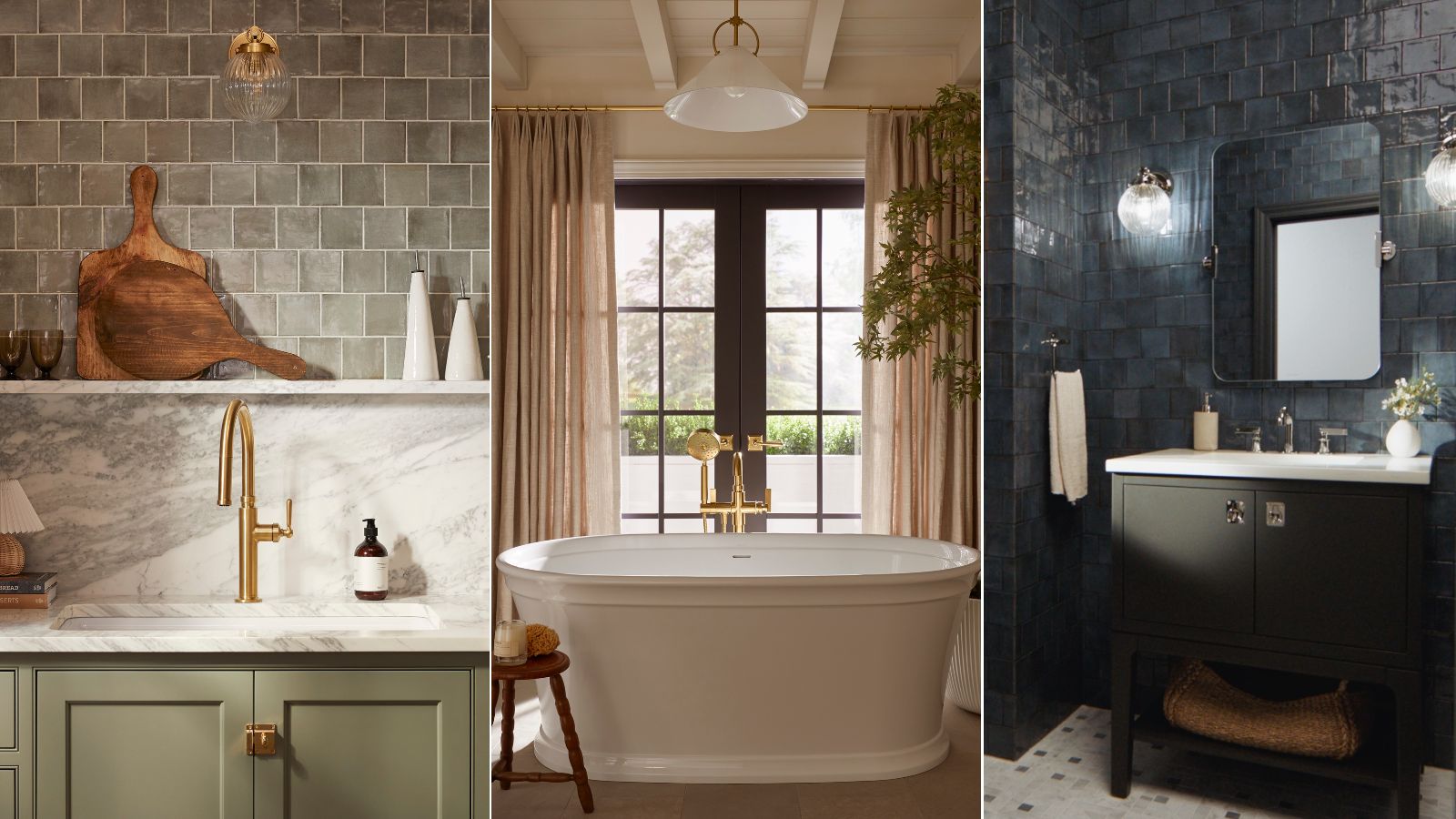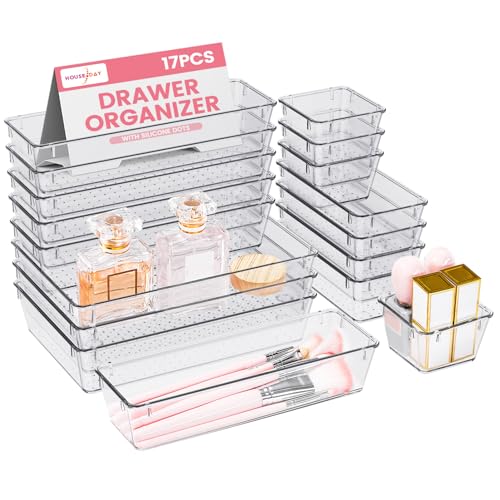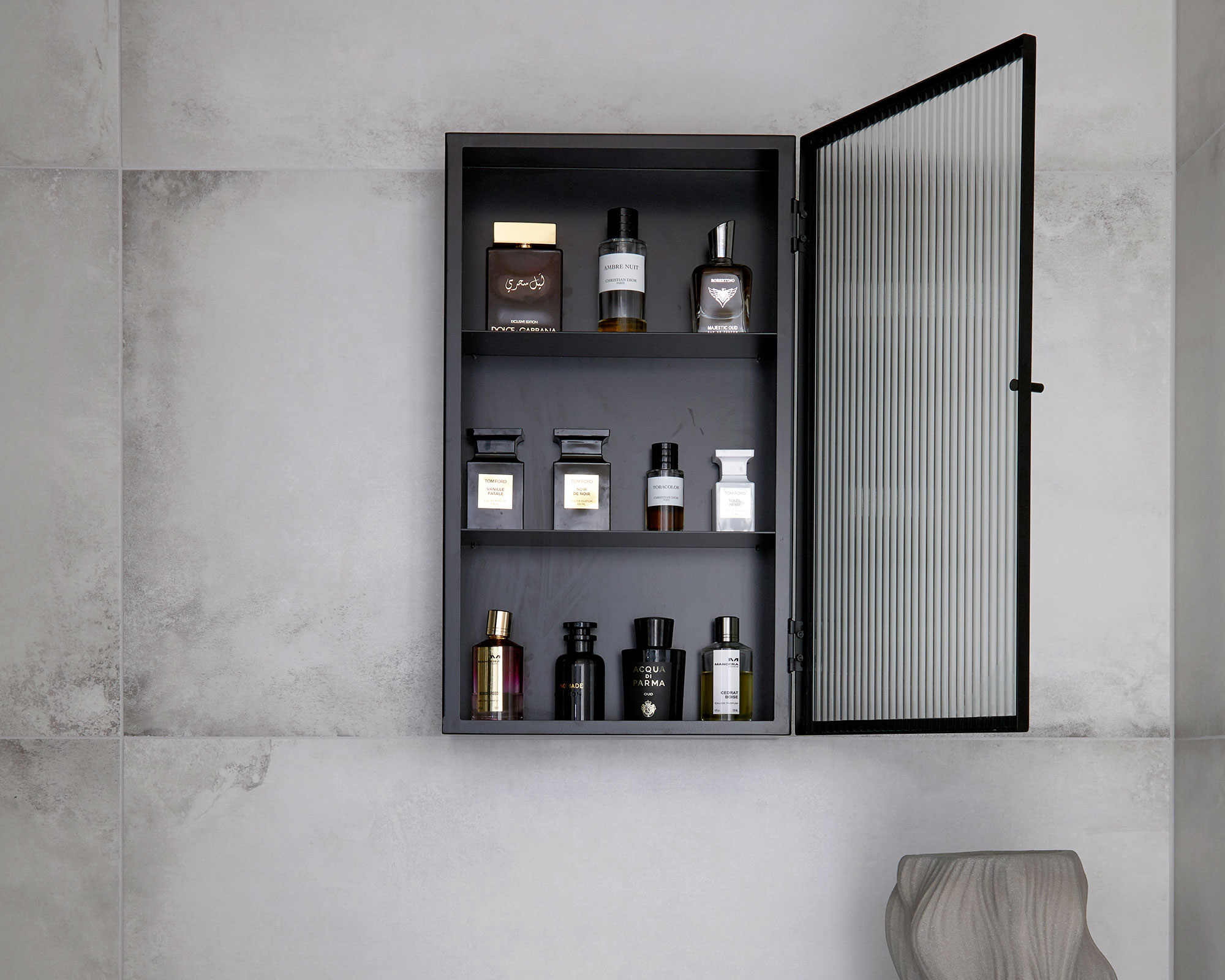
If opening your medicine cabinet is like unleashing Pandora's Box, with a bunch of things tumbling out, or chaos reigning inside, it's as good a time as any to take stock of what you have in there, and get organizing.
Our design and pharmaceutical pros have shared their top 8 ways to go about organizing your medical supplies, whether they are in your bathroom, kitchen or elsewhere, plus what to avoid so the integrity and effectiveness of your drugs and other supplies aren't compromised.
With our expert advice, you won't be making any bathroom cabinet organizing mistakes and crucially, will be able to find the medicine you need, when you need it.
Pro tips for organizing your medicine cabinet
Before you start, consider where you are storing medicines in your home. It needs to firstly be out of the reach of children and pets to avoid any accidental overdoses, ingesting or application to skin, so picking a higher spot is a sensible start.
Next, consider which room in the house you're keeping your medical items.
Dr James Hook, MD at Neurogan Health, says, 'The biggest mistake everyone makes is keeping medicine in the bathroom. Simply don’t do it, the heat and humidity can actually make certain medicines less impactful.'
He recommends instead picking a cool, dry space that is high up, such as the top shelf of a bedroom closet or a high wall-mounted unit. 'This will also ensure that no tiny hands are reaching for stuff they should not be playing with.'
Design expertise in your inbox – from inspiring decorating ideas and beautiful celebrity homes to practical gardening advice and shopping round-ups.
If you have to place yours low down for a lack of storage options, or if you are limited in mobility or reach, and therefore keep these items easily accessible to you under a bathroom sink, store your medical supplies in an air-tight box with a child-proof lock. If any of your daily medicines have ended up being left out regularly, organize your bathroom countertop and put things out of reach.
Although an organized bathroom cabinet is often the primary choice for storing medicines for ease of access for the adults in the home, the humidity of baths and showers can alter the chemistry of your medication, making it less effective. In some cases, heat exposure can increase the potency of your medication and make it harmful to take.
‘As a general rule, the perfect place to store medicines is somewhere cool and dry, so keep them away from water and hot appliances and check the information supplied for any specific storage instructions’, adds Jennifer Rodriguez, Chief Hygiene Officer at PRO Housekeepers.
Armen Gazaryan, chairman and medical expert at CalltheCare recommends picking a bedroom drawer or kitchen cabinet away from the stove or sink area as alternative storage spaces.

Lock away your supplies in this medical box and put the key out of children's reach. The grab handle is convenient for moving your box from its storage spot to where you need it to either comfortably take your medicine, top up your weekly pill organizer or find a first aid item.

Keep your medical supplies and bathing or beauty products separate with this useful multi-cubby wall-mounted unit. It comes in three colors, and five configurations to best suit your storage needs.

Get your first aid supplies organized with this smart wooden box. Sliding the lid off will immediately reveal exactly what you have to make finding the right plasters, bandages, gauze, tape, safety pins, and more a cinch. The last thing you need mid dealing with an injury is chaos in your first aid box.
Once you've decided where to store your items, these are the tips our experts offer for maximizing organization, reducing clutter and making sure you can find what you need.
1. Streamline your supplies

First, empty everything and give your bathroom, bedroom or kitchen cabinet a clean to clear up any sticky residue, spills, grime, mold and dust that's built up. Then, check all expiration dates.
Armen Gazaryan explains, 'Many people ignore the expiration date, but the intake of such medicines could very well lead to no effect at all or even sometimes result in harm. In light of this, checking your medicine cabinet regularly and discarding products that have expired is important. Set a reminder to do an overall medicine check every six months.'
Teri Dreher, president of Nshore Patient Advocates states the importance of disposing of drugs and medical paraphernalia safely and responsibly. Teri says, 'Many pharmacies offer year-round ‘take-back’ services, details of which can be found on the DEA website’.
Then, put aside the medicines you no longer need, or have gone unused and question if you are likely to need them again. A good example of this would be any items you needed after recovery from surgery, during pregnancy or for a health condition that is no longer in play.
Overcrowding in your medical cabinet can make it easy to miss expiration dates so streamlining should come top of your list when organizing your medicine cabinet.
2. Categorize your items

Grouping your medicines and first aid supplies by category is a decluttering golden rule and will mean you can find what you need in a hurry. There are several ways you could group your supplies, so think about what makes the most sense to you and your family or household.
Categorizing by ailment works for some people but can result in crossover. To avoid confusion, we’d recommend organizing by type: painkillers, vitamins, allergy medicines, children’s medication, first aid supplies and so on. You could alternatively categorize by each person in the house, or by adults vs children vs pets.
Professional organizer Brenda Scott of Tidy My Space, says, ‘If more than one person is storing medication in the cabinet, consider assigning them their own shelf or colored storage container. ‘This will eliminate the chance of grabbing the wrong item and reduce time wasted rummaging through bottles and tubes trying to find the right one. Each shelf could then be further organized by grouping items that are frequently used together.'
It's quite common to find non-medical items, such as shampoos and skin care products stored together with medicines. Armen warns against this, adding, 'These things may leak or spill over, messing up your medications and creating a real mess. I suggest keeping separate places or containers for these non-medical items to keep everything clean and safe.'
Using a wall-mounted cabinet with multiple doors and separate storage areas will help with this so you can dedicate one space to medicine, and another to beauty, bathing, and other products needed for the room such as cleaning supplies. We like the Lambeg Surface Mount Frameless Medicine Cabinet from Wayfair as it has three doors in a 2:1 configuration and adjustable shelves: perfect for keeping different categories of items in one storage unit without them interfering with each other.
Having categorized your medicine cabinet can become a lifesaver in an emergency, says Oberon Copeland, CEO and founder of Very Informed, adding, 'Most homes have at least a few basic items, such as bandages and pain relievers so taking the time to inventory your supplies and ensure they’re properly labeled and stored can make all the difference’,
3. Remove bulky packaging

When it comes to organizing a small bathroom or organizing a bathroom vanity, you will need to consider the storage of bulky items. Removing excess packaging can be a useful space-saver, providing the items are easily identifiable. This would work well for bottles of medicine you have bought over the counter, for example, indigestion medicine, which has all the same information on the bottle's label as it does on the exterior packaging.
However, be sure not to remove any packaging that is in place for sterile purposes; plastic wrappers on bandages, for example. Similarly, do not remove items from boxes you cannot easily identify. Professional organizer Dee Middleton says, 'One white tablet looks the same as any other, so keep these in their original packaging,’
You can use pill pouches to store blister packs, and flatten or cut the information you need from the packaging and store inside. This might save your some of the dead space often lost in square or bulky packages. Avoid decanting pills out of blister packs, especially if storing in a humid room such as a bathroom.

You can write a descriptor and expiration date straight onto these BPA-free bags and store them in a narrow container in your medicine cabinet, saving wasted room from cardboard or bulky packaging your medicine or supplies were sold in. Cut out the instructions on the box and place them in the bag, behind the meds so you have the vital info if needed.
4. Label in clear containers

Efficient labeling is an essential part of any organization method, but particularly so when it comes to medication. Since you've already categorized your items, group similar ones together in clear containers so you can see what's inside easily and label the forward-facing side.
‘If you take multiple prescription medications, consider writing the purpose or ailment for each medicine directly onto the label to help you remember what each medicine is for. This can be particularly useful for those that you don’t use that often, and for when you need to request refills’, says Dee Middleton.
A smartphone-compatible label maker such as Amazon's bestselling Phomemo D30 will make light work with dedicated apps and templates to work with.
For extra efficiency, create a smaller group of regularly used medications and store them in a prime position, towards the front of the cabinet. Place them in baskets to keep them clearly separate from the rest of your general medicine collection.
When it comes to positioning other, lesser-used items within the cabinet, think about what you use most and prioritize access to them. It sounds simple, but this can make a huge difference, both functionally and aesthetically – less rummaging around usually results in a neater, tidier space overall.
Jennifer Rodriguez also recommends taking the time of year into account. She says, ‘You could give allergy medicines prime position at the front of the cabinet for spring, then swap them for cold and flu medicines when winter rolls around’.
If space in the bathroom is limited, you may also consider an organized linen closet as an alternative place for medicine storage. Organizing under a bathroom sink is another solution worth considering.
I have two spaces in my home for medical supplies. As I am in chronic pain and have multiple health conditions, I keep my potent, daily medications which are prescribed to me in bulk in a lidded plastic box (similar to the Sterilite Deep Click Box) the top of my bedroom closet, away from my child and pets, and use a small weekly box (like the Auvon 7-day pill organizer) which I keep in my handbag, hung out of reach of my child, to just have enough for the week, stocking up on a Sunday for the week ahead. They’re handy for traveling, too.
Our other more day-to-day medical supplies such as electrolytes, vitamins, plasters, minor pain relief and children's pain and fever relief medications are in stackable see-through boxes (similar to Amazon's Choice Stackable Citylife Small Storage Bins on the top shelf of my kitchen cabinet where we store cups and reusable water bottles. It's away from the heat of our stove, and the humidity of the sink and in easy reach (for us adults).

This 17-piece set of plastic, see-through trays are perfect for narrow medicine cabinets and great for the often varying shapes and dimensions of medical supplies. Store bottles side by side in the longer ones, or pop your smaller items such as bandages and plasters in the smaller ones. Label the front to be able to tell at a glance which box to pull out for your purposes.
6. Maximize storage space and efficiency

To organize medication efficiently in a cabinet large or small, you’ll want to ensure everything is as visible and accessible as possible.
Clear, stackable containers are great space-savers, plus have the added benefit of pulling right out so you have a proper rifle through.
If you have the space, home organizer Emma George of Declutter with Emma recommends positioning a lazy Susan inside your cabinet. She says, ‘They keep bottled medicines in place and rotate so you can easily access what you need without having to rummage around and knock things over.'
Josh Qian, COO and co-founder of Best Online Cabinets says, 'A common medicine cabinet mistake is organizing products solely by height or size rather than function or frequency of use.
'This approach might seem logical for aesthetic reasons, but it often results in lesser-used items being overlooked or misplaced, leading to a cluttered and inefficient space.;
Josh advised instead grouping items by their purpose. Medications are together, skincare is in another section, and first-aid supplies are in a separate area. He says, 'This will make everything easy to find and reduce the chances of using the wrong product in a hurry.'
7. Use the door

If you’re still struggling for space to fit in a medicine cabinet, go vertical instead. ‘A rack system on the door is a great place for storing taller bottles or awkwardly shaped packets that won’t fit on shelves’, says Brenda Scott. ‘It’s also a great place for pinning up doctor’s info, emergency contact numbers and medicine schedules, if you require one’.
Consider hanging a chalk or dry-erase board on the inside of the door. Write up reminders of when and what medication to take (and when to take it) or use it to keep a running shopping list of items in need of replenishment.
The caveat to this is storing medicines and medical supplies on the back of the door within reach of children or pets, who may accidentally ingest something they shouldn't, or hurt themselves. Keep those key items locked away somewhere safe.

A mesh wrack over the door like this may prove helpful if you have small children in the home. The high mesh baskets are out of reach, and may work well to store a first aid kit, whilst the hooks can double up to create storage for other items in the room.
8. Stay on top of organization

Investing in storage containers aplenty isn’t enough – if you’re not consistently sorting through the items in your bathroom medicine cabinet or elsewhere, clutter will build and you’re right back at square one. Be sure to schedule regular clearouts to ensure you’re not hanging on to items you don’t need. Once a year will suffice but some experts recommend doing so every six months.
This cadence will also allow you to reassess how useful the current lineup of items at the front are. Seasonal allergy pills for example will be more needed in spring and summer than in winter.
As tempting as it is to stock up on medicines ‘just in case’, it’s a good idea to only buy what you need. Having too many means more packets to rifle through, plus they often get forgotten and not used before their expiration date, resulting in unnecessary clutter and waste.
FAQs
What should be stored in a medicine cabinet?
Ideally, a medicine cabinet should be reserved for just that – medicine. Make a list of products needed to stock it, including prescription medication as well as more general pain relief and first aid supplies, so you’re prepared for any eventuality.
If you’re organizing a small bathroom, chances are your medicine cabinet plays host to other bathroom essentials, too – shampoo, shaving cream, make-up, toothpaste to name just a few. Ideally, these are better stored elsewhere, but if that’s not possible, consider assigning them their own storage container or shelf within the cabinet to keep them separate and avoid any shampoo spills contaminating or ruining your medical supplies.
How often should I clean my medicine cabinet?
Josh Qian, of Best Online Cabinets says, 'People often overlook the importance of regularly cleaning their medicine cabinets. Dust, moisture, and residue from products can accumulate over time, creating an unsanitary environment that can contaminate items like toothbrushes or open medicine packets.
'A simple routine of wiping down surfaces and reorganizing them every few weeks can prevent this buildup and maintain a hygienic space.'
Use a cleaning spray such as Method Antibacterial All-Purpose Cleaner Spray from Amazon, which contains citric acid, a potent natural cleaner. Learn where in the home you should never use citric acid, such as natural stone.
Having a decluttered, organized medicine cabinet will come in handy not only day to day, but in an emergency. Now you've streamlined yours, learn about the spinning tiered organizer professionals say is a 'fantastic find' and perfect for storing your cosmetic supplies, which might just get your beauty products out of your bathroom cabinet and on hand near your vanity.

Punteha was editor of Real Homes before joining Homes and Gardens. She has written and edited wellbeing, lifestyle, and consumer pieces for the national press for 17 years, working across print and digital newspapers and magazines. She’s a Sunday Times bestselling ghostwriter, former BBC Good Food columnist and founding editor of independent magazine, lacunavoices.com. Punteha loves keeping her home clean, has tested and reviewed the latest robot vacuums and video doorbells, enjoys cooking, DIY, decluttering and spending weekends improving her newly-built home. Punteha is disabled and in chronic pain, so small, paced projects that bring big impact and make her household run smoothly are her focus.
- Tara KingContributing Editor
